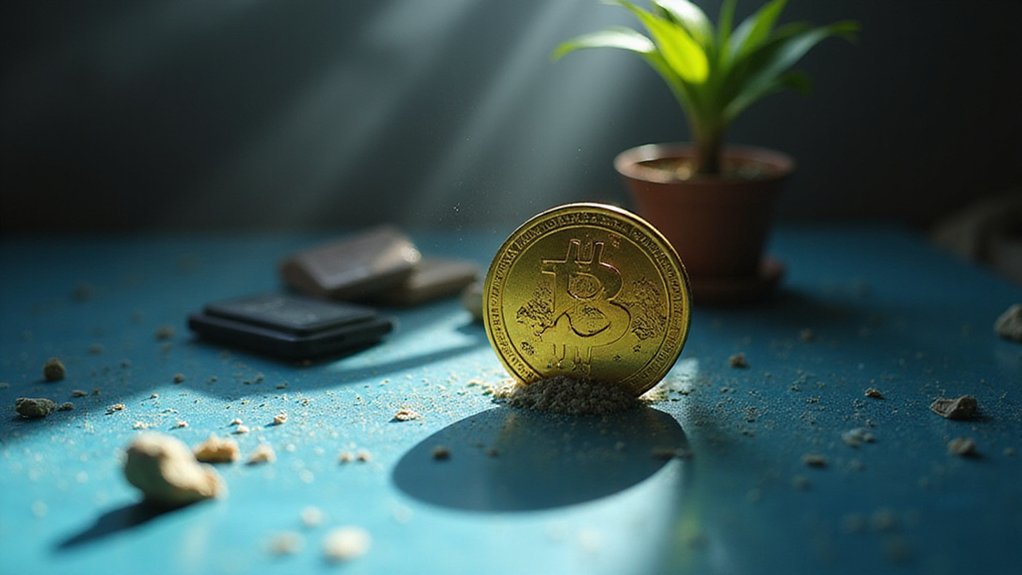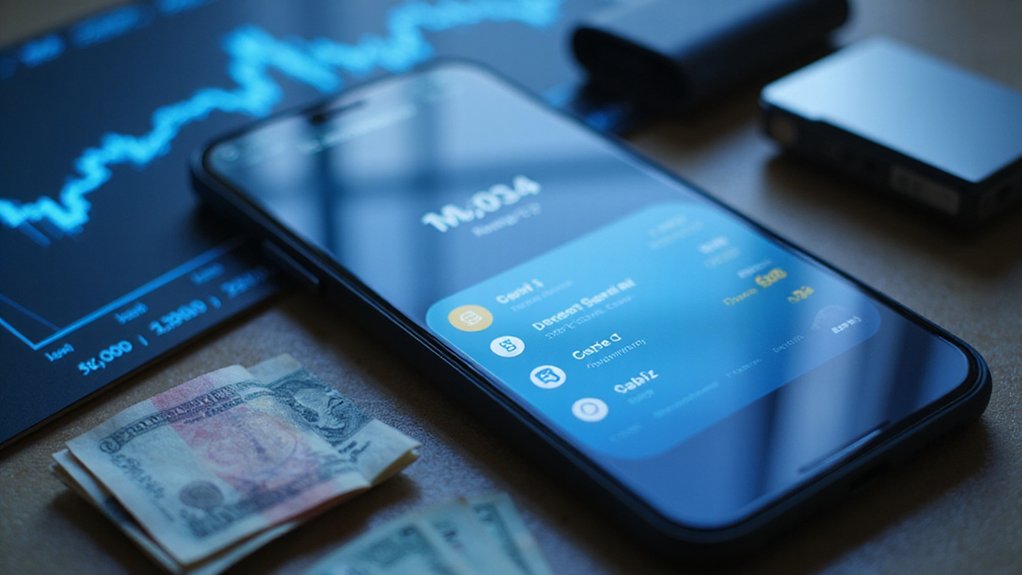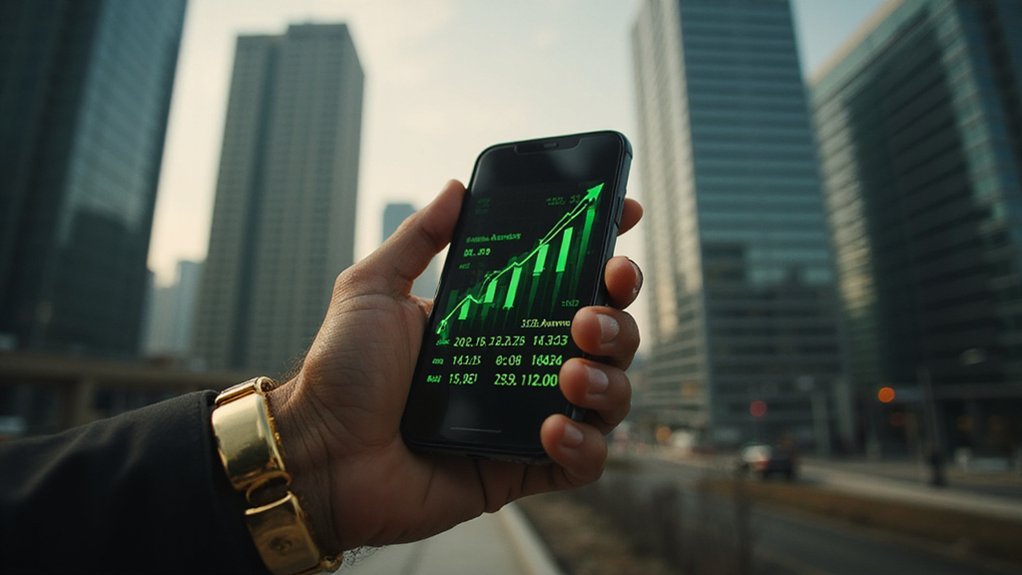NFTs experienced a meteoric rise followed by a sobering correction. After peaking at $946 million in January 2023, the market declined 24% in early 2025 versus December 2024, yet still commands a formidable $43.08 billion valuation. The ecosystem evolved from pure speculation toward utility-focused applications in music rights and gaming. Despite persistent volatility and regulatory uncertainty, the technology’s fundamental value proposition—digital provenance—remains intact. The market’s trajectory suggests a maturation phase rather than extinction.

Where exactly did the once-explosive NFT market go after its meteoric rise captured global attention and billions in capital?
After the initial frenzy, the ecosystem has entered a phase of recalibration—trading volume peaked at $946 million in January 2023 but experienced a 24% decline in early 2025 compared to December 2024.
Yet while headlines proclaim the death of digital collectibles (a premature obituary, perhaps?), the underlying market fundamentals tell a more nuanced story. Corporate giants like Amazon have entered the space with an NFT marketplace that allows payments via credit or debit card, eliminating the need for crypto wallets.
While market obituaries for NFTs proliferate, the technology’s fundamentals reveal a transformation rather than an extinction.
The global NFT market size reached $43.08 billion in 2024 and projects upward to $61.01 billion in 2025, with total sales volume exceeding $65 billion to date.
Ethereum, Solana, and Bitcoin remain the dominant blockchains in this space.
User adoption continues its measured climb, with global users expected to reach 11.6 million in 2025—a figure that, while growing, represents a mere 0.35% of the global population. Cryptocurrency ownership currently stands at an average of 6.8% globally, indicating significant room for NFT market expansion as blockchain familiarity grows.
What’s particularly telling is the market’s evolution beyond pixelated profile pictures and digital artwork.
The shift toward utility NFTs—those offering tangible benefits like exclusive access, community membership, or fractional ownership of real-world assets—signals a maturation of the technology’s application. These tokens serve as digital identifiers that verify ownership and authenticity of assets on the blockchain, providing an unprecedented level of digital provenance.
Music rights management and gaming ecosystems have emerged as particularly fertile grounds for these applications.
Market sentiment for 2025 skews cautiously optimistic, with some analysts viewing the recent lull as consolidation before the next growth phase.
Investment firms like VanEck anticipate a rebound, particularly if crypto-friendly regulations materialize in the U.S.
The integration of AI with NFTs presents another frontier for innovation, though questions about the artistic provenance of AI-generated content add another layer of complexity.
Challenges persist: market volatility, regulatory uncertainty, and the perpetual skepticism of traditional art collectors who view digital ownership as ephemeral at best.
The ultra-wealthy have largely remained on the sidelines, preferring tangible Picassos to tokenized pixels.
Yet the core technology—digital provenance and ownership verification—offers enduring value even as the collectible trends evolve.
Perhaps the question isn’t “what happened to NFTs?” but rather “what are NFTs becoming?”
Frequently Asked Questions
How Can Beginners Safely Start Investing in NFTS?
Beginners venturing into NFT investment should establish foundational safeguards: secure a reputable crypto wallet (MetaMask being the perennial favorite), connect it to established marketplaces like OpenSea, and—crucially—adhere to the investor’s equivalent of the Hippocratic oath: first, do no harm to one’s financial stability.
Start with modest allocations, research creator credentials meticulously, and approach the ecosystem with healthy skepticism—after all, digital provenance remains an enigmatic concept to most traditional collectors.
What Environmental Concerns Are Associated With NFT Minting?
NFT minting carries substantial environmental baggage, primarily through its carbon footprint (211 kg CO2 per NFT lifecycle) and electronic waste generation.
The energy-intensive Proof-of-Work consensus mechanisms—blockchain’s computational backbone—demand extensive electricity, often from fossil fuel sources.
Each transaction adds to this burden: minting (83 kg), bids (23 kg), and sales (51 kg).
While alternatives exist (Proof-of-Stake systems reduce emissions dramatically), the industry’s rapid growth continues to amplify these ecological concerns without proportionate mitigation efforts.
Can NFTS Be Taxed, and How?
NFTs can indeed be taxed, and quite thoroughly.
The IRS classifies them as property, subjecting transactions to capital gains taxation—up to 37% for short-term holdings and 20% for long-term (unless deemed collectibles, which face a steeper 28% rate).
While minting remains generally tax-free, subsequent sales, exchanges, and even certain transfers trigger taxable events.
The cryptocurrency used for purchases adds another layer of complexity, potentially creating separate taxable events for the crypto itself.
Are NFTS Protected by Copyright Laws Internationally?
NFTs receive copyright protection internationally through frameworks like the Berne Convention, which covers creative works regardless of medium.
However, this protection remains uneven across jurisdictions, with the EU’s Copyright Directive offering more explicit digital content provisions than some regions.
The critical distinction between NFT ownership and copyright ownership persists globally—purchasing an NFT typically confers limited license rights rather than full copyright transfer, a nuance many collectors discover belatedly (and occasionally expensively).
How Do NFT Royalties Work for Creators?
NFT royalties function as an automated revenue mechanism encoded in smart contracts, enabling creators to receive a percentage—typically 5-10%—from each secondary sale of their work.
This perpetual compensation model, predicated on blockchain’s trustless verification system, offers artists recurring income streams rather than one-time payments.
The enforcement, however, remains marketplace-dependent, creating a precarious equilibrium: set royalties too high and trading liquidity suffers; too low and creators forgo potential earnings in appreciating markets.









